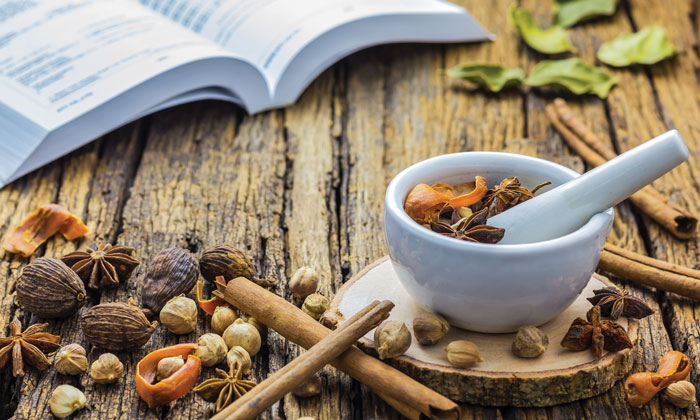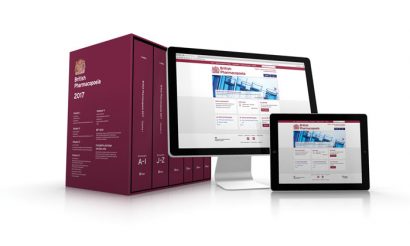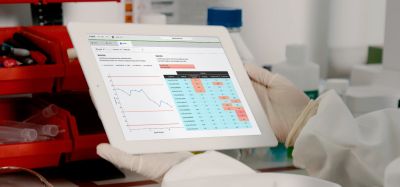The British Pharmacopoeia – in 2017 and beyond
Posted: 22 February 2017 | James Pound (British Pharmacopoeia) | No comments yet
The British Pharmacopoeia (BP) is a collection of authoritative and publicly available quality standards for medicines, supported by guidance and additional value-adding information. First published in 1864, the BP has an illustrious history that has been built on quality and continually responds to the needs of stakeholders and users.


The BP Secretariat is an integral part of the United Kingdom’s Medicines and Healthcare products Regulatory Agency (MHRA), strategically located within the Inspection, Enforcement and Standards Division since 2003. As such, it has access to expertise, experience and resources that mean it is well placed to maintain the BP’s strong reputation and build on ongoing successes. 2017 will be an important year for the British Pharmacopoeia (BP), with a number of exciting initiatives and new content being published.
Trends
As the BP 2017 is legally effective from 1st January 2017, it is timely to consider the changes that are shaping the life sciences landscape, as well as current and future challenges and opportunities in ensuring the quality of medicines. Like other pharmacopoeias, the BP continues to evolve to meet the need for medicines’ quality in the 21st Century. Some of the important trends in the global pharmacopoeial landscape are summarised as follows.
Global supply chains
There are complex and diverse supply chains that are truly global across mature and developing markets. Quality standards make an important contribution to securing the global supply chain and there is a growing need for pharmacopoeias to consider global stakeholder input on the development of appropriate quality standards for medicines.
Harmonisation
Good progress has been made in harmonising pharmacopoeial standards by the Pharmacopoeial Discussion Group (PDG), however, stakeholders continue to desire greater harmonisation. More recent initiatives, such as the World Health Organisation’s (WHO) good pharmacopoeial practices and informal bilateral harmonisation between the BP and the United States Pharmacopoeia (USP), seek to build new mechanisms for aligning and synchronising pharmacopoeial standards.
Biologics and biotech
Biological products are predicted to form an increasing percentage of total spending on medicines1 . The BP’s unique positioning and access to the knowledge and skills at the National Institute for Biological Standards and Control (NIBSC) means it is well placed to engage with stakeholders on how standards can evolve to meet the challenges of newer and complex medicines such as monoclonal antibodies and advanced therapies.
Technology and innovation
Quality standards in the pharmacopoeia must reflect the industry and community that they seek to serve. As innovative products reach the market and new manufacturing and analytical technology is introduced, the pharmacopoeias must work to ensure that, over time, they evolve to accommodate these new advances.
Collaboration and partnership
So how is the BP addressing these trends? One approach is forging collaborations. In a globalised world with complex supply chains, it is critical that the BP works with its partners in the pharmacopoeial community and the biopharma ceutical industry to develop appropriate quality standards for medicines. The BP’s strong bilateral relationships, the ability to tap into the MHRA’s wide and deep network of stake holders and the wide global usage of the BP (over 100 countries) means it is well placed to continue to play an important global role in developing quality standards for medicines.
In Europe, the UK was one of the eight founding signa – tories to the Convention on the Elaboration of a European Pharmacopoeia, which led to the establishment of the Ph Eur in the early 1960s as a means to develop harmonised quality standards for medicinal substances across the member states of the Council of Europe.
The BP, as the UK’s National Pharmacopoeial Authority, provides significant support and expertise to the Ph Eur and its expert groups. The BP is a strong supporter and advocate for the important and valuable work of the European Pharmacopoeia.
In addition, the BP has bilateral collaboration agreements with a number of European authorities for the partial or whole reproduction of BP monographs in their respective publications, with a view to supporting the development of competent national pharmacopoeial authorities in these countries.
In North America, the BP has developed a close and productive relationship with the USP. This includes a number of exciting initiatives to develop informally harmonised standards for drug products, and collaboration and knowledge sharing on new developments such as standards for biological medicines, such as monoclonal antibodies, as well as the appli cation of Quality by Design (QbD) concepts to analytical procedures.
Asia-Pacific is a critically important region for the development and manufacture of medicines and starting materials; maintaining and growing key relationships in this region has, and will continue, to be a high priority for the BP.
To support continued and expanded close working with the Chinese Pharmacopoeia, a memorandum of understanding (MoU) was signed in May 2016 which identified joint development of quality standards across a range of medicines and medicinal products as a key priority. Staff exchanges have also been undertaken to build knowledge and understanding of the differences and similarities in the pharmacopoeial and regulatory environments in each country. Similarly, the BP and Indian Pharmacopoeial Commission are working in close collaboration under the aegis of the MoU between the MHRA and the Central Drugs Standard Control Organisation to undertake joint working and knowledge sharing.


Figure 1: Additional guidance on the use of DNA barcoding as a tool for botanical identification of herbal drugs was included in BP 2017
The BP greatly values its contribution to the global public health agenda through its cooperation with the WHO and the work of the International Pharmacopoeia. BP is a strong contributor to the work of the WHO/IP both in the form of a collaboration agreement for the development of quality standards and active support and participation in initiatives such as good pharmacopoeial practices.
Collectively, these relationships support the BP’s ability to understand and respond to the need of a globalised industry, and to align and harmonise standards.
New medicines – biologics
As part of the MHRA, the BP is committed to ensuring the quality of biological medicines through its activities in the development of pharmacopoeial quality standards.
One of the key priorities in the Agency’s corporate plan2 is to promote international standardisation and harmonisa tion to assure the efficacy and safety of biological medicines. The success of the merger with the NIBSC in 2013 has ensured the MHRA continues to play a world-leading role in this field.
With the increasing importance of biological medicines to global healthcare strategies, it is important that the BP continues to ensure the quality of these medicines using authoritative pharmacopoeial quality standards as well as considering how standards can act as enablers for innovation now and in the future. For example, the UK Medicines Manufacturing Industry Partnership advanced therapies taskforce has identified standards as a key area to support the development and manufacture of new and innovative medicines3.


Figure 2: The end user’s digital experience is held in high regard by the BP Secretariat
Drawing on expertise from the BP and NIBSC, the MHRA is developing a strategy for the creation of pharmacopoeial public quality standards for biological medicines. A public consultation launched in early January 2017 by the MHRA seeks to obtain feedback and input from stakeholders regarding how standards can be developed, used and improved4 .
Technology and innovation
The BP frequently reviews the latest developments in analytical science and the manufacturing and quality control of medicines to ensure it best meets the needs of users and reflects emerging practice. This is well aligned with broader UK Government and Agency priorities, for example, the UK Strategy for Life Sciences5 .
Two excellent examples of the BP’s exploration and adoption of new technology and the facilitation of innovation are the projects on the use of molecular biology for the quality control of herbal medicines and the application of Quality by Design (QbD) concepts to analytical procedures in the pharmacopoeia.
The work on the use of molecular biology techniques has already borne fruit with the publication of a new appendix for DNA-based identification techniques for herbal drugs in the BP 2016, including a worked example for holy basil and supported by a first-in-class nucleic acid reference material, developed jointly with NIBSC. This was supplemented in the BP 2017 by the inclusion of additional guidance on the use of DNA barcoding as a tool for botanical identification of herbal drugs (see Figure 1).
The QbD project was initiated in 2013 with a view to better understanding industry proposals regarding the application of QbD to analytical procedures and how such concepts could potentially be adopted or facilitated by the pharmacopoeia. This includes the use of quality risk management tools and Design of Experiments methodology to better understand analytical methods and how the analytical target profile can serve as an enabler for method development and ensuring that analytical methods are fit for their intended purpose.
A working party comprised of experts from within the MHRA and from across industry was formed in 2015 and a pilot project initiated to study the application of these concepts to a candidate monograph (atorvastatin tablets). This project has already yielded many useful insights and has provided an opportunity to collaborate with the USP’s method lifecycle activities6 . It is anticipated that the outcomes of this project will be published in 2017.
BP 2017
Ultimately the success of the BP’s work to address the changing trends in the pharmacopoeial landscape is translated into the content of each new edition of the publication. The BP 2017, legally effective from 1st January 2017, includes the following important new content:
- 29 new BP monographs
- 234 amended monographs
- Four new formulated preparation monographs for biological medicines
- Two new monographs for unlicensed formulations
- A new informally harmonised drug product monograph (Aprepitant Capsules)
- A new supplementary chapter on DNA barcoding
- A new supplementary chapter on the Aseptic Preparation of Unlicensed Medicines
- All European Pharmacopoeia monographs integrated (8th Edition as amended by Supplements 8.1 to 8.8)
- Three in-year website and offline download updates to harmonise with the European Pharmacopoeia 9th Edition (9.0) and Supplements 9.1 and 9.2.
The BP 2017 is available in a range of product formats; hardcopy, download and online. Regular users of the BP will be aware of the successful redevelopment of the BP website in 2015 following usability feedback from a range of stakeholders. This product enhancement was undertaken in line with best practice for UK Government websites to ensure the greatest value to the end user. The BP Secretariat remains committed to continually improving the products and services, with a particular focus on enhancing the end user’s digital experience (see Figure 2).
Summary
In summary, the BP continues to adapt and evolve to the changing world including new medicines, technology and emerging science. We can only ever serve the needs of stakeholders and users by engaging in an open conversation and would welcome feedback on the BP’s products and services from stakeholders.
About the author


James Pound is currently the Editor in Chief of the British Pharmacopoeia (part of the MHRA) and previously worked in a variety of roles in the Pharmacopoeia since joining in 2008. He holds an honours degree in chemistry and has held a range of positions focused on analytical chemistry for both multinational pharmaceutical manufacturers and independent UK analytical laboratories.
References
- IMS Health Report The Biologics Market
- Corporate Plan 2013-2018, Medicines and Healthcare products Regulatory Agency. Available at: https://www.gov.uk/government/uploads/system/uploads/attachment_data/ file/350879/con261796__1_.pdf
- Action Plan for UK to capture the next generation of medicines manufacturing jobs, The Association of the British Pharmaceutical Industry. Available at: http://www.abpi.org.uk/media-centre/newsreleases/2016/Pages/Action-Plan-for-UK-to-capture-the-nextgeneration-of-medicines-manufacturing-jobs.aspx
- Strategy for pharmacopoeial public quality standards for biological medicines, Medicines and Healthcare products Regulatory Agency. Available at: https://www.gov.uk/ government/consultations/strategy-for-pharmacopoeial-public-quality-standards-forbiological-medicines
- Strategy for UK Life Sciences, Department for Business, Innovation & Skills. Available at: https://www.gov.uk/government/uploads/system/uploads/attachment_data/file/32457/11- 1429-strategy-for-uk-life-sciences.pdf
- Lifecycle Management of Analytical Procedures: Method Development, Procedre Performance Qualification, and Procedure Performance Verification. Available at: https://www.usp.org/sites/default/files/usp_pdf/EN/USPNF/revisions/lifecycle_pdf.pdf
Feedback
If you would like to give feedback on the BP’s products and services, please send an email to: [email protected]









